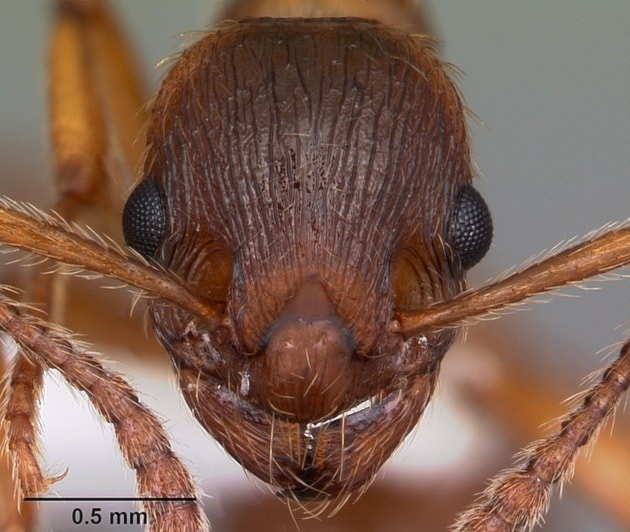A B.C. biologist who specializes in ants says Chilliwack is one of several Lower Mainland locations where European fire ants have been confirmed.
Robert Higgins, an entomologist from Thompson Rivers University, says he can pinpoint their arrival in B.C. to about four years ago after he examined a specimen he'd been sent by Agriculture Canada.
"I had been suspecting this ant would show up," Higgins said.
Anecdotal reports on social media of fire ants, which have not been confirmed by Higgins, cite Chilliwack streets such as Maple, Hazel, Brooks, Kent, Princess and Charles.
But City of Chilliwack reps say they have had no official reports from citizens about the presence of European fire ants in Chilliwack.
Higgins would not disclose or confirm any of the specific locations that he is aware of in Chilliwack due to privacy issues, but is still willing to help owners who think they have fire ants.
The defining characteristic of the European fire ant is that when their nests are disturbed, they will swarm, sometimes in the thousands.
They actually weren't known to cause any trouble for humans until about a decade ago.
"This seems to be a more aggressive and invasive variety of fire ants than we had seen previously," Higgins said.
The are known to invade the landscape and colonize it with highly dense nests in people's gardens and lawns.
"When they were first reported in the (scientific) literature 40 or even 100 years ago, it was 'hey this ant is here,' but it wasn't having a big impact yet on other insects.
"Whatever is happening now, it is pushing out other insects. It's actually displacing native ants."
Specimens from Chilliwack homeowners were sent to the researcher in recent years to help identify and confirm this ant species was really here.
So what is the very best way to permanently remove European fire ants?
"Right now we don't have a best way," Higgins replied. "It's all about preventing the spread."
There's some tests underway to remove entire colonies of fire ants by coaxing them into containers.
But traditional pest control methods, like the standard use of pesticides, may not work at all.
"Research in Maine showed that pesticide was not effective," he said.
What about boric acid?
"It's not as promising as I thought, but we may want to refine how it is done."
One of two confirmed Chilliwack locations for European fire ants covers a five-block radius. Higgins said the last time he was in Chilliwack with other researchers, they mapped out the distribution of fire ant nests in that one area.
The thing is these are not your typical backyard ants. Their colonies can have up to 1000 workers and 20 queens.
"I have seen up to four colonies in one square metre."
They swarm in huge numbers, and pack quite a sting.
Although the sting is not quite as painful as a wasp bite, people can be stung simultaneously by several ants at once, and some will suffer from painful swelling. It's been likened the painful sensation of stinging nettle.
These fire ants are also different from the Southern variety that plagues the southeastern United States, such as New Orleans, and have been established in North America for more than 100 years.
Some of Higgins' research involves trying to find an effective way to remove the European fire ants, as well as mapping out their complex nests.
Higgins has a bit of advice for concerned residents.
One, when they bring any kind of soil onto their properties, it should be thoroughly checked for the presence of ants. Soil movement is the main way they are spread around.
Two, if they already have the ants, it's important to stop the spread into the wider neighbourhood.
"We're looking at how to take advantage of any natural barriers to their movement, like a retaining wall, or someone's lawn that is never watered."
The third priority is finding ways to get rid of them, or at least "knock them back," he said.
"I do want to encourage people to contact me if they think they have European fire ants on their properties," he said. "We'll let them know if they do or don't. If they don't, it's a huge relief.
"If it turns out they do have them, we'll provide information to let them know what they are up against, and some ideas to help them reduce the numbers."
Email him for information at rhiggins@tru.ca or go to his web page which can help homeowners with the ID. He's awaiting news on research funding this month to see if he'll be returning to Chilliwack this summer for more study and mapping.
jfeinberg@theprogress.com
Twitter.com/chwkjourno
